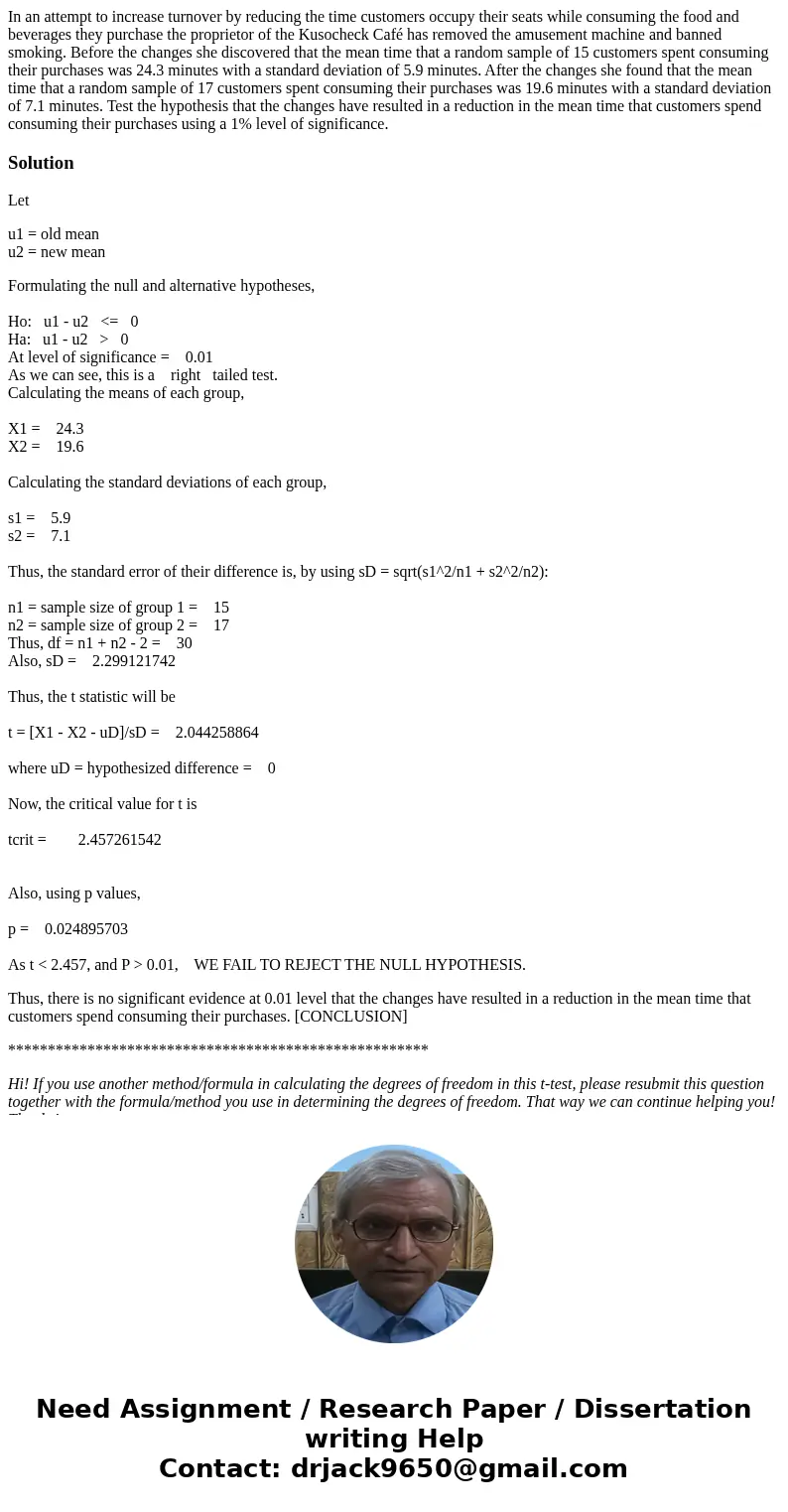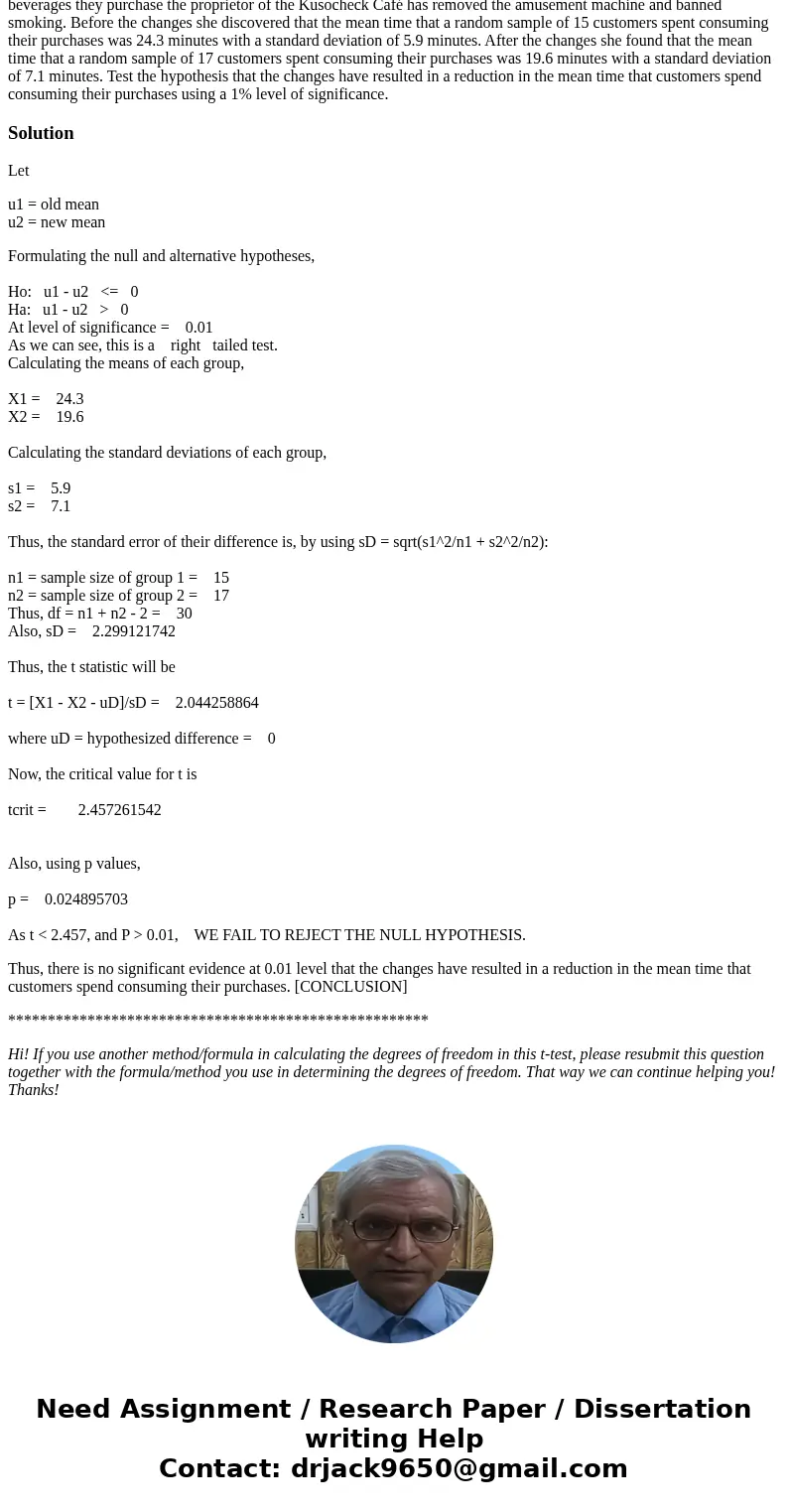In an attempt to increase turnover by reducing the time cust
In an attempt to increase turnover by reducing the time customers occupy their seats while consuming the food and beverages they purchase the proprietor of the Kusocheck Café has removed the amusement machine and banned smoking. Before the changes she discovered that the mean time that a random sample of 15 customers spent consuming their purchases was 24.3 minutes with a standard deviation of 5.9 minutes. After the changes she found that the mean time that a random sample of 17 customers spent consuming their purchases was 19.6 minutes with a standard deviation of 7.1 minutes. Test the hypothesis that the changes have resulted in a reduction in the mean time that customers spend consuming their purchases using a 1% level of significance.
Solution
Let
u1 = old mean
u2 = new mean
Formulating the null and alternative hypotheses,
Ho: u1 - u2 <= 0
Ha: u1 - u2 > 0
At level of significance = 0.01
As we can see, this is a right tailed test.
Calculating the means of each group,
X1 = 24.3
X2 = 19.6
Calculating the standard deviations of each group,
s1 = 5.9
s2 = 7.1
Thus, the standard error of their difference is, by using sD = sqrt(s1^2/n1 + s2^2/n2):
n1 = sample size of group 1 = 15
n2 = sample size of group 2 = 17
Thus, df = n1 + n2 - 2 = 30
Also, sD = 2.299121742
Thus, the t statistic will be
t = [X1 - X2 - uD]/sD = 2.044258864
where uD = hypothesized difference = 0
Now, the critical value for t is
tcrit = 2.457261542
Also, using p values,
p = 0.024895703
As t < 2.457, and P > 0.01, WE FAIL TO REJECT THE NULL HYPOTHESIS.
Thus, there is no significant evidence at 0.01 level that the changes have resulted in a reduction in the mean time that customers spend consuming their purchases. [CONCLUSION]
*****************************************************
Hi! If you use another method/formula in calculating the degrees of freedom in this t-test, please resubmit this question together with the formula/method you use in determining the degrees of freedom. That way we can continue helping you! Thanks!


 Homework Sourse
Homework Sourse